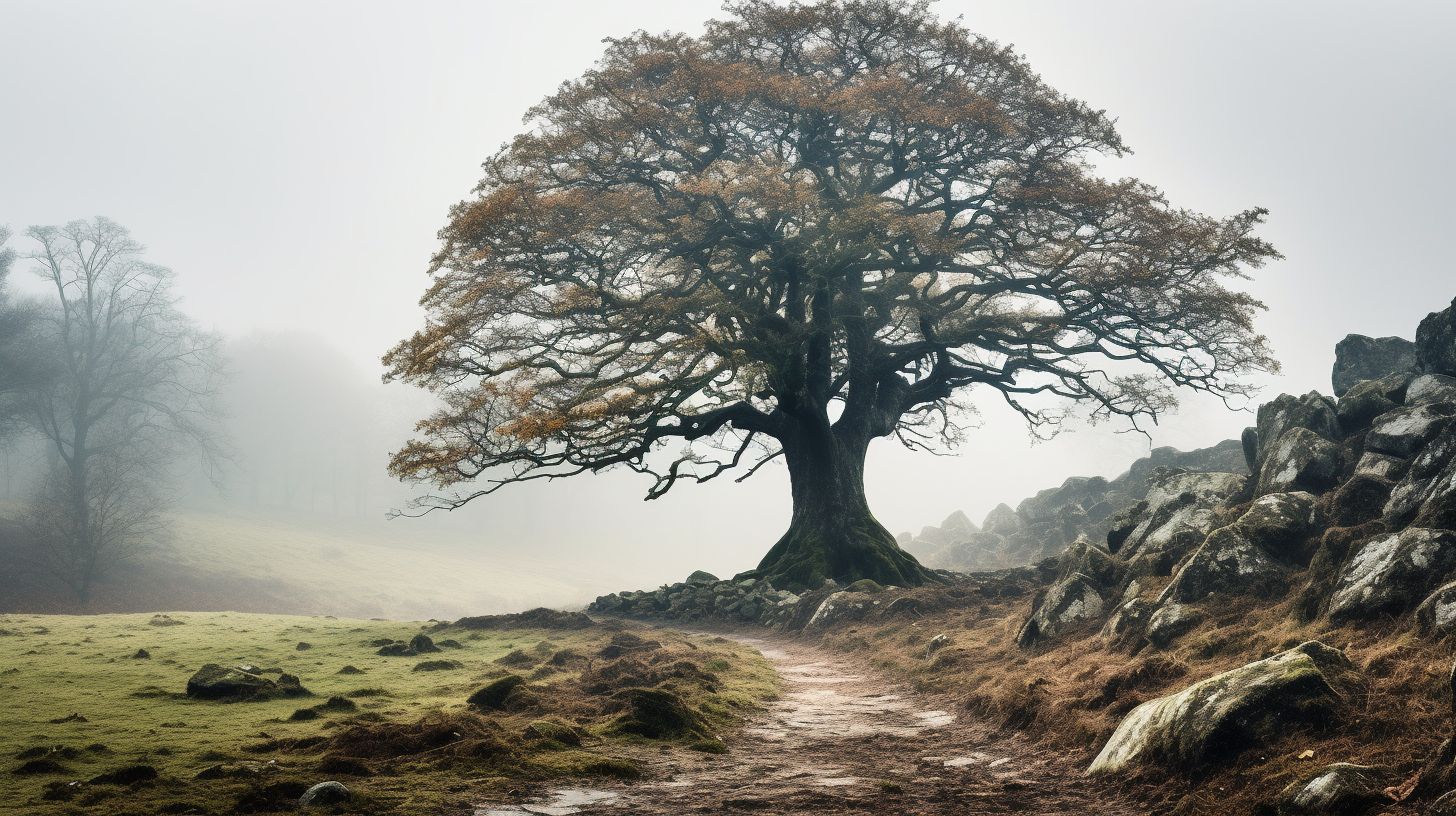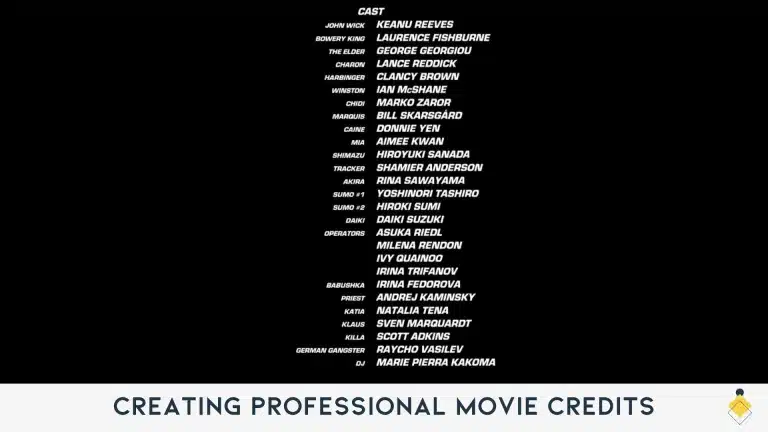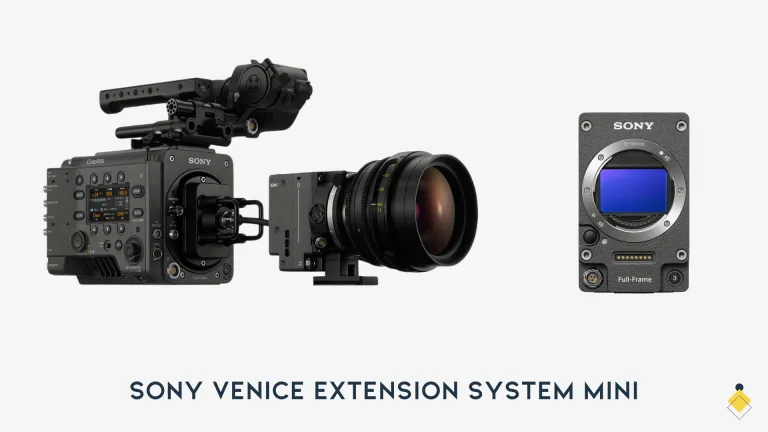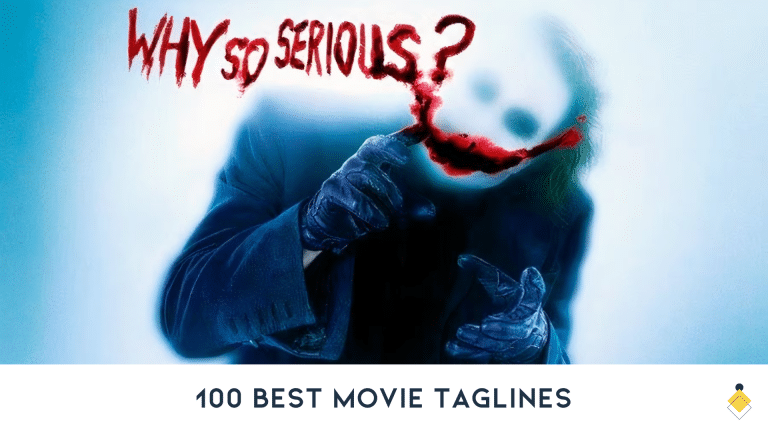Capturing the perfect picture isn’t just about clicking a button; it matters what lens you’re peering through. Did you know each lens has its unique way of transforming your storytelling in photography? This blog post will guide you on how to choose the right lens for your story, helping you convey emotions more effectively.
Ready to give your snapshots a remarkable new depth? Read on!
The Importance of Lens Choice in Storytelling

Choosing the right lens can significantly enhance the storytelling aspect of photography. This essential tool not only determines how a story gets told but also influences its visual impact.
An appropriate lens selection helps to focus on the desired elements in a photograph, guiding viewers’ eyes towards the central narrative or providing supporting detail from the environment around.
Often ignored, different lenses have different effects on images and, consequently, how stories get portrayed. For instance, ultra-wide-angle lenses may distort people’s faces when taking close-ups but provide broader scenery for landscape images that create a distinct viewer connection with nature’s grandeur.
Longer focal lengths like 50mm or 85mm are often used for shooting portraits to diminish visible distortions and create flattering results.
Lens choice should align with both your location and storyline to produce effective brand stories or family snapshots alike. Furthermore, light conditions play an indispensable role in deciding what type of lens gets used.
For example, wide-aperture lenses appear necessary under low-light situations where strobes are not available.
Various techniques such as perspective shifts using converging lines achieved through specific lenses elevate visual storytelling further by manipulating space perception in photographs.
Lens quality is also pivotal; sharper image resolution greatly aids in capturing viewer attention and evoking emotional responses – crucial components of compelling storytelling in photography.
Therefore, understanding lens types’ technical qualities along with their impactful roles remains invaluable for any aspiring photographer aiming at powerful storytelling through their captures.
Understanding the Story You Want to Tell
To tell a compelling story through the right lens, it is crucial to understand the location, characters, and lighting that will shape your narrative.
Location
Choosing the right location is pivotal for visual storytelling in photography. The surroundings where you snap your pictures can greatly influence your lens choice, altering the way a story unfolds before the viewer’s eyes.

It’s not merely a backdrop but forms an integral part of the narrative – be it landscape images or family snapshots.
A location often dictates if you need to use wide-angle lenses or prefer longer focal lengths, like 50mm or 85mm lenses. For example, crowded city streets call for an ultra-wide angle lens that captures converging lines and vast scopes with ease.
In contrast, capturing intimate portraits might require a Fujifilm XF 50-140mm f/2.8 or similar to flatter a person from a decent working distance.
Characters
In storytelling through photography, characters play a central role. Different lenses can highlight these characters, allowing viewers to feel an emotional connection with them. Each character’s unique traits and their part in the story are intricately linked with the lens choice, bringing out visual elements that convey their personalities more vividly.
For instance, a wide-angle lens might be used to reveal converging lines of a character’s journey or struggle. On the other hand, a long lens could focus on details in portraits showing intimacy or vulnerability.

Lens selection also plays into how viewers perceive the character’s dialogue and non-verbal communication signals further solidifying their place within the story framework.
This creates room for active viewer engagement by provoking feelings—fear, joy or curiosity—and promoting deeper interaction with each captured image.
Lighting
Lighting is a vital player in storytelling through photography. It sets the mood, enhances details, and helps to evoke emotions. Different lighting setups can drastically change the look and feel of an image.
A brightly lit scene can convey happiness or joy while dim light might suggest mystery or sadness.

Selecting the appropriate lens for various lighting conditions contributes greatly to effective visual communication. For example, working with available light often calls for a wide-aperture lens like the Fujifilm’s XF 16mm f/1.4 to let in more light for a brighter image.
On the other hand, using strobes as your primary source of illumination may allow you to use lenses with narrower apertures without sacrificing image quality.
(sm)ART Storytelling Lenses: An Overview
In this section, we will delve into the (sm)ART lenses that can help elevate your storytelling. Don’t miss out on these valuable tips and insights!
Theme
Different lenses can play a significant role in conveying the theme of your story. The choice of lens can help create a specific mood or atmosphere that aligns with the underlying message you want to convey.
For example, if your theme revolves around adventure and exploration, using wide-angle lenses can capture vast landscapes and emphasize the sense of discovery. On the other hand, if your theme is more focused on intimacy or emotions, longer focal lengths like 50mm or 85mm are recommended for capturing close-up shots that evoke a deeper connection with the subject.
By carefully selecting the right lens for your story’s theme, you can enhance its impact and effectively engage your audience.
Focal length and aperture are crucial factors to consider when choosing a lens for storytelling purposes. They have a direct impact on how visually compelling and immersive your story will be.
Different focal lengths allow you to control perspective and composition while the aperture controls the depth of field, adding emphasis to certain elements within the frame. Understanding how these technical qualities affect storytelling empowers you to make informed decisions about which lenses best suit the themes you want to explore.
Genre
Genre plays a crucial role in storytelling. It sets the tone, style, and overall theme of a story. By selecting the appropriate genre for your photography project, you can effectively convey the desired emotions and engage your audience on a deeper level.
Whether it’s capturing stunning landscapes or intimate family moments, understanding the genre you want to portray will guide your lens choice and help create a cohesive visual narrative.
Setting
Location plays a significant role in lens selection when telling a story through photography. The setting can set the tone for the entire project and help establish the atmosphere you want to convey.
For wide open spaces, longer lenses are recommended as they allow you to focus on your subject and capture details from a distance. On the other hand, wide-angle lenses can be used to accentuate converging lines in a location, drawing the viewer’s attention to the subject.
However, it’s important to note that using ultra-wide-angle lenses may cause distortion when photographing people. To capture flattering portraits, longer focal lengths like 50mm or 85mm are recommended options.
Scene
The scene you are shooting plays a crucial role in determining the lens choice for your storytelling. If you’re capturing wide open spaces, using a longer lens with a shallow depth of field can enhance the sense of scale and create a captivating visual effect.
On the other hand, when photographing scenes with converging lines or details, opting for a wide-angle lens can draw the viewer’s attention to the subject while providing supporting context.
Don’t shy away from experimenting with ultra-wide-angle lenses, even though they may introduce distortion when photographing people. For flattering portraits without visible distortions, it is recommended to use longer focal lengths like 50mm or 85mm.
Keep in mind that longer focal lengths require more working distance and may result in a shallower depth of field, which can impact how supporting elements contribute to the overall frame composition.
Point of View (POV)
Point of view (POV) is a crucial aspect of storytelling in photography. It refers to the perspective from which the story is told and can greatly impact how the viewer connects with the images.
By choosing a specific POV, photographers can create a sense of intimacy or distance, control what elements are highlighted or obscured, and guide the viewer’s emotions and understanding of the narrative.
Whether it’s capturing a bird’s eye view to provide an overview or using a worm’s eye perspective to add drama, selecting the right point of view allows photographers to effectively convey their intended story through their images.
In storytelling lenses for photography, point of view plays an essential role in audience engagement and emotional connection. By carefully considering how different perspectives will influence viewers’ experiences, photographers have the power to evoke specific emotions and create impactful visuals.
Perspective
Choosing the right lens perspective can greatly impact how your story is portrayed to the viewer. The perspective refers to the angle from which you photograph your subject, and it can drastically change the mood and meaning of an image.
A bird’s eye view, for example, provides a wide and sweeping look at a scene, while a worm’s eye view captures a more dramatic and imposing feel. By carefully selecting the perspective that aligns with your storytelling goals, you can create powerful images that engage and captivate your audience.
Dialogue
Dialogue plays a crucial role in storytelling as it allows characters to communicate and express their thoughts, emotions, and motivations. It adds depth to the narrative and helps develop the relationships between characters.
Through dialogue, readers or viewers can gain insight into a character’s personality, background, and beliefs. Effective dialogue should be natural-sounding and advance the story by revealing important information or driving conflicts forward.
By carefully crafting dialogue that is authentic and meaningful, storytellers can captivate their audience and bring their characters to life.
Plot
Choosing the right lens plays a crucial role in conveying the plot of your story effectively through photography. The lens you select will affect how your audience perceives and interprets the events and narrative in your images.
Different lenses can emphasize certain elements of the plot, such as capturing close-ups for intense moments or wide-angle shots to establish a setting or provide context. By carefully considering the plot you want to convey before choosing a lens, you can ensure that your storytelling is clear, engaging, and impactful.
Conflict
Conflict is a crucial element in storytelling that drives the narrative and creates tension. It adds excitement and keeps viewers engaged with the story. Conflict can come in different forms, whether it’s a physical fight between characters, an internal struggle within a protagonist, or a clash of opposing forces.
By introducing conflict into your stories, you create opportunities for character growth and development. It allows you to explore themes such as love, power, betrayal, or redemption.
Conflict brings depth and complexity to your storytelling, making it more compelling and memorable for your audience.
Incorporating conflict effectively requires careful planning and consideration of how it fits into the overall story arc. The type of conflict chosen should reflect the goals and motivations of the characters involved while also aligning with the desired emotional impact on viewers.
When done well, conflict can create powerful moments that resonate with audiences long after they have experienced your story.
Confrontation
Confrontation is a crucial element in storytelling as it creates tension and drives the plot forward. It’s the moment when conflicts between characters come to a head, leading to intense dramatic moments that captivate viewers.
Choosing the right lens for capturing confrontation scenes is important because it can enhance the emotions and intensity of the moment. Wide-angle lenses can help convey a sense of closeness and urgency, while telephoto lenses allow you to capture intimate details from a distance.
The lens choice ultimately depends on how you want to portray the confrontation and what impact you want to have on your audience.
Lens Types and Their Impact on Storytelling
Different lens types have a significant impact on storytelling, including factors such as focal length, aperture, and lens quality.
Focal Length
Focal length plays a crucial role in storytelling through photography. It refers to the distance between the lens and the camera’s image sensor. Different focal lengths can drastically change the composition and perspective of an image, allowing you to convey your story in unique ways.
Wide-angle lenses, such as ultra-wide angle lenses, are great for capturing expansive landscapes or setting a scene with converging lines. However, they may result in some distortion when photographing people up close.
On the other hand, longer focal lengths like 50mm or 85mm are recommended for portraits as they flatter the subject and minimize distortions. Understanding how focal length affects your visuals will help you choose the right lens to enhance your storytelling abilities.
Aperture
The aperture setting on your camera plays a crucial role in storytelling through photography. It determines the amount of light that enters the lens, affecting the mood and atmosphere of your images.

By adjusting the aperture, you can control the depth of field, which refers to how much of your photo is in focus. A wide aperture, indicated by a smaller f-number like f/1.8, creates a shallow depth of field.
This allows you to isolate your subject and create a blurred background for a more intimate storytelling approach. On the other hand, a narrow aperture with a larger f-number like f/16 will bring more elements in your scene into focus, making it suitable for capturing landscapes or group shots where you want everything to be sharp and clear.
A wide-aperture lens comes in handy when shooting in low-light situations as it allows more light into the camera sensor. This means you can maintain faster shutter speeds without sacrificing image quality or resorting to using flash or artificial lighting sources.
Lens Quality
Lens quality is an important consideration when it comes to storytelling through photography. Different lenses can have varying levels of sharpness, clarity, and overall image quality.
A lens with good quality will produce clear, crisp images with minimal distortion or aberrations. On the other hand, a lens of poor quality may result in blurry or soft images that lack detail and definition.
By investing in lenses with high-quality optics, photographers can ensure that their storytelling visuals are visually appealing and convey the intended message effectively.
Understanding camera lens quality also involves considering factors such as build materials and durability. Higher-end lenses often feature robust construction and weather-sealing capabilities, making them suitable for various shooting conditions and environments.
Additionally, lens coatings play a role in reducing flare and ghosting caused by stray light reflections.
How Lenses Affect Your Story
Lenses have a significant impact on your storytelling, from framing subjects to setting the tone of your project. Discover how different lens choices can enhance your story and captivate viewers.
Read more to explore the power of lenses in storytelling.
Framing Subjects
Framing subjects is a crucial aspect of storytelling through the right lens. It allows you to capture the essence of your story and create a visual impact. Consider the following techniques when framing your subjects:
- Rule of Thirds: Position your subject off-center, aligning them along imaginary lines that divide the frame into thirds horizontally and vertically.
- Background: Pay attention to what is happening in the background as it can enhance or distract from your subject. Choose a background that complements your story.
- Exploring a Subject: Experiment with different angles and perspectives to capture various aspects of your subject’s personality or environment.
- Establishing Shot: Use a wide-angle lens to establish the setting and provide context for your story.
- Medium Shot: Frame your subject from the waist up, allowing for closer interaction with their facial expressions and body language.
- Portrait: Focus on capturing the details and emotions of an individual by framing them close-up, emphasizing their face or specific features.
- Moment: Capture key moments in your story by anticipating action and being ready to click at the right time.
Tone of the Project
Choosing the right lens for your project goes beyond technical specifications – it’s about capturing the tone of your story. The lens you choose can greatly impact the mood and atmosphere of your visuals, setting the emotional tone for your audience.
For example, a longer focal length with a shallow depth of field can create a more intimate and cinematic feel, while a wide-angle lens can give a sense of space and grandeur. By selecting a lens that aligns with the desired tone of your project, you can engage viewers on an emotional level and enhance the overall storytelling experience.
In addition to considering how different lenses affect framing and subject matter, it’s essential to think about how they contribute to the overall atmosphere you want to convey in your project.
Subject Matter
Different subject matter requires different lens choices for storytelling in photography. The subject matter of a photo or video determines the type of lens that will best capture and convey the story.
For example, if you are shooting portraits, longer focal lengths like 50mm or 85mm lenses are recommended to flatter the subjects. On the other hand, wide open spaces benefit from longer lenses with a shallow depth of field to bring focus to specific elements in the scene.
By choosing the right lens based on your subject matter, you can effectively enhance the visual storytelling and create a stronger emotional connection with your audience.
Understanding Camera Lenses
Camera lenses are essential tools in storytelling, allowing photographers to capture their subjects with the right perspective and visual elements.
Lens Basics
Choosing the right lens for storytelling starts with understanding the basics. Here are some key points to keep in mind:
- Focal length determines how wide or zoomed in your shot will be.
- Aperture controls the amount of light that enters the lens.
- Lens quality can impact sharpness, color reproduction, and distortion.
- Different lenses have different characteristics and purposes.
Understanding Camera Lens Quality
Camera lens quality plays a crucial role in capturing high-quality images and videos. Different brands, such as Canon, Carl Zeiss, Sigma, Cooke Cinema, and Zeiss offer lenses with varying levels of quality.
When selecting a lens for your camera, it’s important to consider factors like budget, camera compatibility, and the subject matter you’ll be shooting. The quality of the lens can greatly impact the sharpness, clarity, color reproduction, and overall image or video quality.
Factors like lens coatings and the number of glass elements can also affect image performance by reducing unwanted reflections or aberrations. By investing in a high-quality lens that suits your needs and budget, you can ensure that your storytelling through photography or videography is enhanced with crisp imagery.
Lens Accessories
Lens Accessories play a crucial role in enhancing your storytelling through photography. Here are some essential accessories that can elevate your lens performance:
- Lens Filters: Filters such as UV filters, polarizing filters, and neutral density filters can help reduce glare, enhance colors, and control light intensity.
- Lens Hoods: Lens hoods help prevent lens flare by blocking stray light from entering the lens.
- Lens Caps: Lens caps protect the front and rear elements of the lens from dust, scratches, and damage when not in use.
- Lens Cleaning Kit: A lens cleaning kit consisting of a soft brush, microfiber cloth, and lens cleaning solution is vital for keeping your lenses free from dirt and smudges.
- Lens Adapters: Lens adapters allow you to mount lenses with different mounts onto your camera body.
- Tripods/Monopods: Tripods or monopods provide stability to avoid camera shake when using longer focal lengths or shooting in low-light conditions.
- Remote Shutter Release: A remote shutter release allows you to capture images without touching the camera, reducing the risk of camera shake.
- Lens Cases/Pouches: Proper storage options like lens cases or pouches protect your lenses during transportation or storage.
- Extension Tubes: Extension tubes enable close-up photography by increasing the distance between the lens and sensor, allowing for greater magnification.
- Lens Calibration Tools: Calibration tools like focus charts or autofocus calibration targets ensure optimal focusing accuracy with your lenses.
Choosing the Right Lens for Your Story
Selecting the appropriate lens is essential for effectively telling your story through photography. Consider the following factors when choosing a lens for your narrative:
- The location where you’ll be shooting: Different environments may require specific lenses to capture the desired mood and atmosphere.
- The characters involved: Determine whether you need a lens that can capture close-ups or one that can encompass a broader view to include multiple subjects.
- Lighting conditions: Take into account the available light and adjust your lens choice accordingly, whether you need a wide-aperture lens for low-light situations or a lens that performs well in bright conditions.
- The type of scene you want to create: Depending on the intended effect, consider using various lenses to achieve different perspectives and focal lengths.
- The point of view (POV) from which you want to tell the story: Select a lens that aligns with the narrative perspective, whether it’s capturing an intimate moment or presenting a bird’s eye view.
Conclusion
Choosing the right lens is essential for effectively telling a story through photography. By understanding the story you want to tell, considering location and lighting conditions, and selecting the appropriate focal length and aperture, you can capture powerful images that engage viewers on an emotional level.
So next time you pick up your camera, remember that the right lens can make all the difference in conveying your story to the world.
FAQs: Telling A Story Through The Right Lens
Telling a story through the right lens means using specific lens technical qualities like 35mm full-frame focal lengths, narrow depth of field, and avoiding barrel distortion to effectively convey your viewer’s or brand’s story.
Yes! Intimacy in photography can be achieved by using lenses such as the 50mm or Fujifilm X100F which are favored by photographers like Dylan Goldby due to their ability to capture images with real emotion.
Devices like iPad assist in capturing images and recording videos that can show scenes from bird’s eye view or worm’s eye view which you then use when setting up your storyboards for apps like iMovie or Haiku Deck.
Absolutely! By understanding concepts from Christopher Vogler’s book on the Hero’s Journey, students learn how subject matter experts (SMEs) use devices like the Fuji X-T3 with its image stabilization features to capture their own short stories and scenarios.
Digital storytelling allows real-life interactions through virtual reality (VR), interactive videos, scenario-based leaning, case studies etc., ultimately making eLearning more engaging while meeting learning objectives.
Surely not! Creating an effective character arc involves appropriate media capture techniques and tools including Alfred Hitchcock method of scene setting along with collaboration software such as Mural or Miro.





